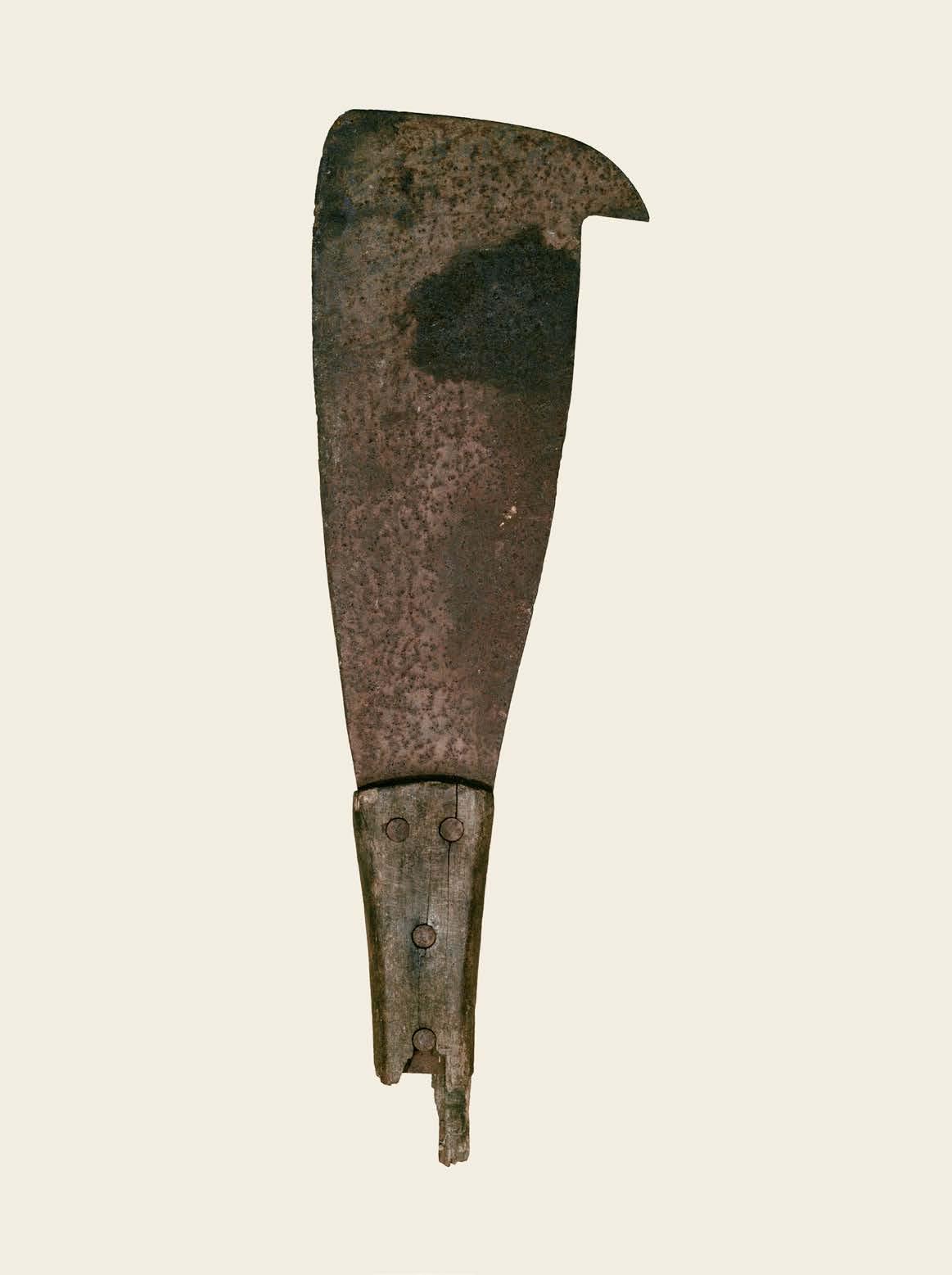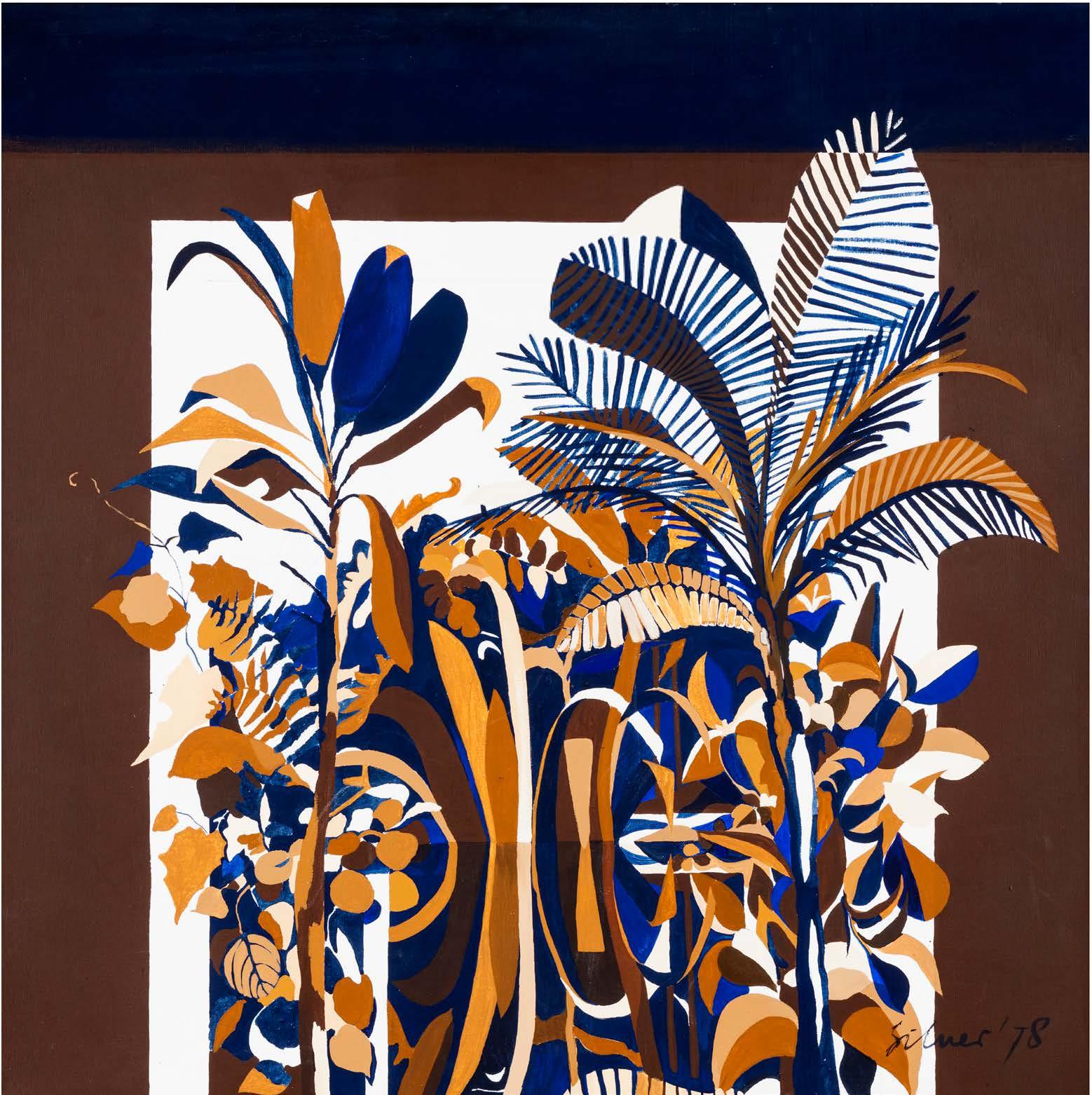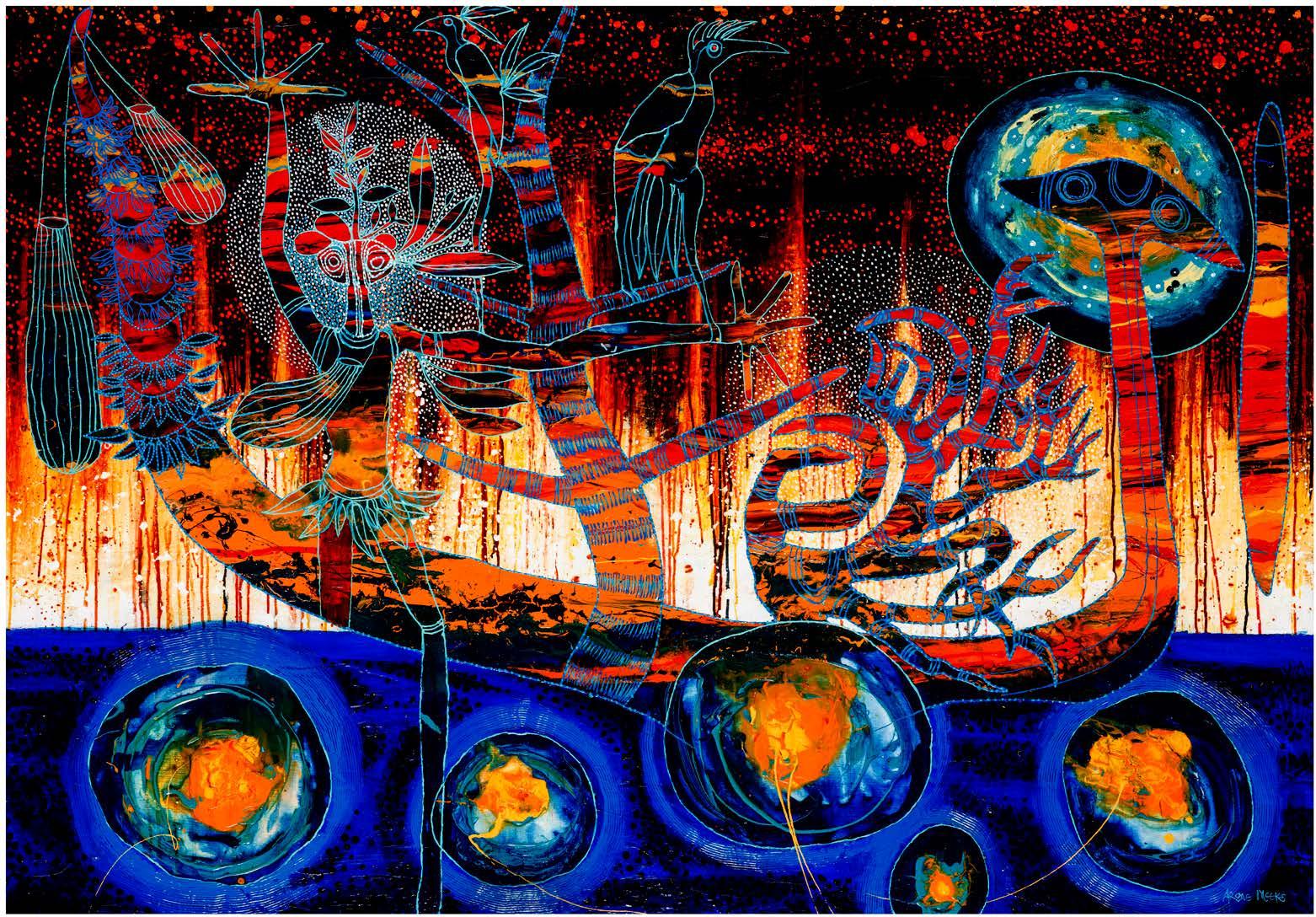
4 minute read
Arone Meeks
b. 1957, Laura, Cape York, Far North Queensland of the Kuku Midigi people
Arone Meeks is a Kuku Midigi man, currently residing in Cairns. Meeks was raised in El Arish, in Far North Queensland, although his family’s Country is Laura on the Cape York Peninsula. He was raised with his initiated grandfather and spent time with one of the North’s most celebrated indigenous artists, Thancoupie, who he describes as ‘Athoy’, spiritual mother. Her passion for redefining Indigenous Art was influential for Meeks. His own artistic practice encompasses an array of media and his thematic approach remains strong throughout. Using traditional imagery and symbolism, he expresses a passion for sacred Country, spirituality, Indigenous issues, and politics, tempered with a contemporary colour palette and design. By combining the traditional and the contemporary, Meeks is able to translate and renew the Dreaming in his own style. Meeks has been proactive as a founding artist with the Boomalli Aboriginal artists collective in Sydney and initiating the annual NAIDOC exhibition at the Tanks Art Centre in Cairns.

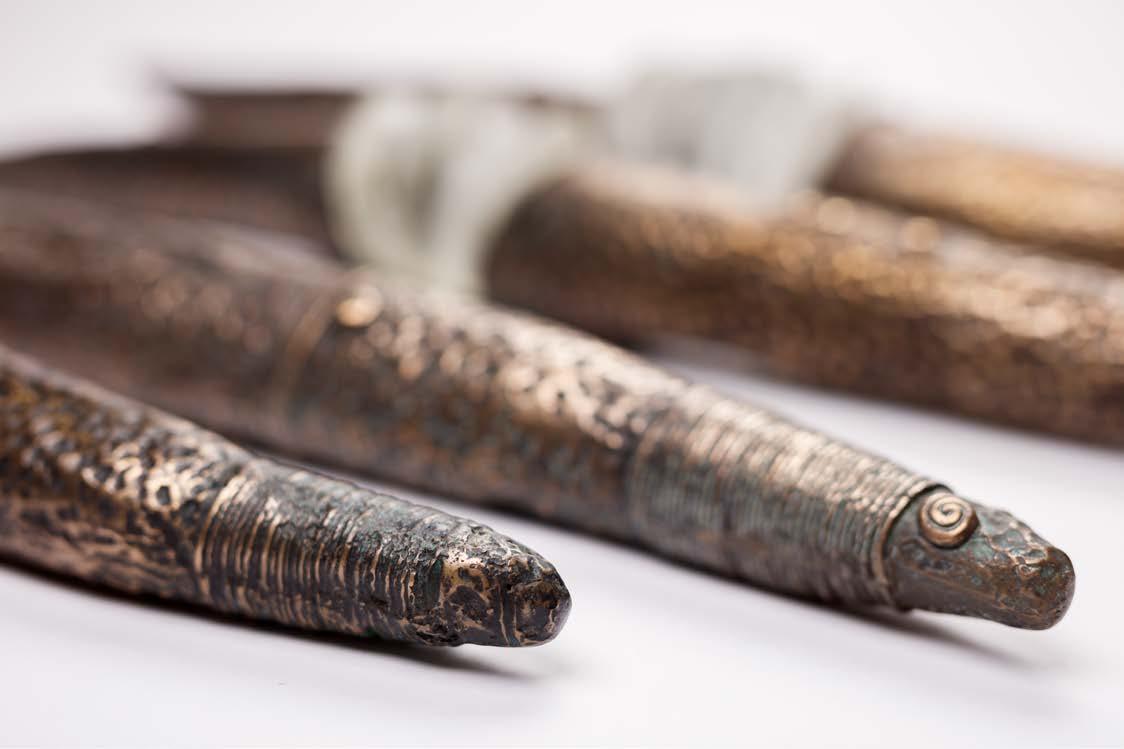
Jenny Mulcahy
b. 1952, Pakenham, Victoria
Jenny Mulcahy’s work is focused on the landscape and environmental concerns of North and North-West Queensland region. Rather than creating work that is a purely visual response to a specific landscape, her work endeavours to capture the essence or spirit of a particular place and time. Her Finite Regeneration series (2006) evolved as a response to the landscape directly surrounding the now defunct Mary Kathleen uranium mine. Based on humankind’s earliest forms of non-verbal communication, the series relates a story of the past, the present, and carries a warning for the future. The use of bronze references the way in which raw materials harvested from the earth can be worked or manipulated to create life as well as end it; bronze being one of the first man made alloys to be used for tools and weapons. Similarly, while the use of uranium has become routine in diagnostic radiology, nuclear medicine and radiation therapy it is also responsible for immense devastation caused by nuclear explosions and leaks from nuclear power plants. The symbolism of the fertility figures portrayed in pictograms on the bronze sections represent the cycle of life whose continuity is dependent upon the earth’s ability to recover from humankind’s depredations. The glass sections serve to mediate between humankind and the innate primal energy contained deep below the earth’s surface and also as a metaphor for the healing properties associated with naturally formed crystal.
Jenny Mulcahy
Finite Regeneration: Missives #1 2006 Cast bronze 61 x 6 x 5 cm
Finite Regeneration: Missives #2 2006 Cast bronze 76 x 7 x 5 cm
Finite Regeneration: Missives #3 2006 Cast bronze and cast crystal 98 x 10 x 10 cm
Finite Regeneration: Missives #4 2006
Cast bronze and cast crystal 108 x 12 x 12 cm
All courtesy of the Artist
Hannah Murray
b. 1982, Ayr, Queensland
Hannah Murray, artist and educator, has been developing a decidedly tropical aesthetic in recent years, particularly with her use of plant life and Tropicana aesthetics, through painting, drawing, printmaking, and more recently product and fabric design. Painted on stretched wallpaper, Mother’s Ruin (2018), Blood And Bone (2018), and Blue Birds-Of-Paradise (2018) bring together many of the artist’s botanical interests, but take a darker turn in their vases of choice, discarded gin bottles. A gin and tonic still carries a colonial association and the tropical cuttings infuse the bottles with a dark, decidedly domestic undertone. Murray is currently living and working in Townsville.
Mixed media on wallpaper 51 x 51 cm Courtesy of the Artist
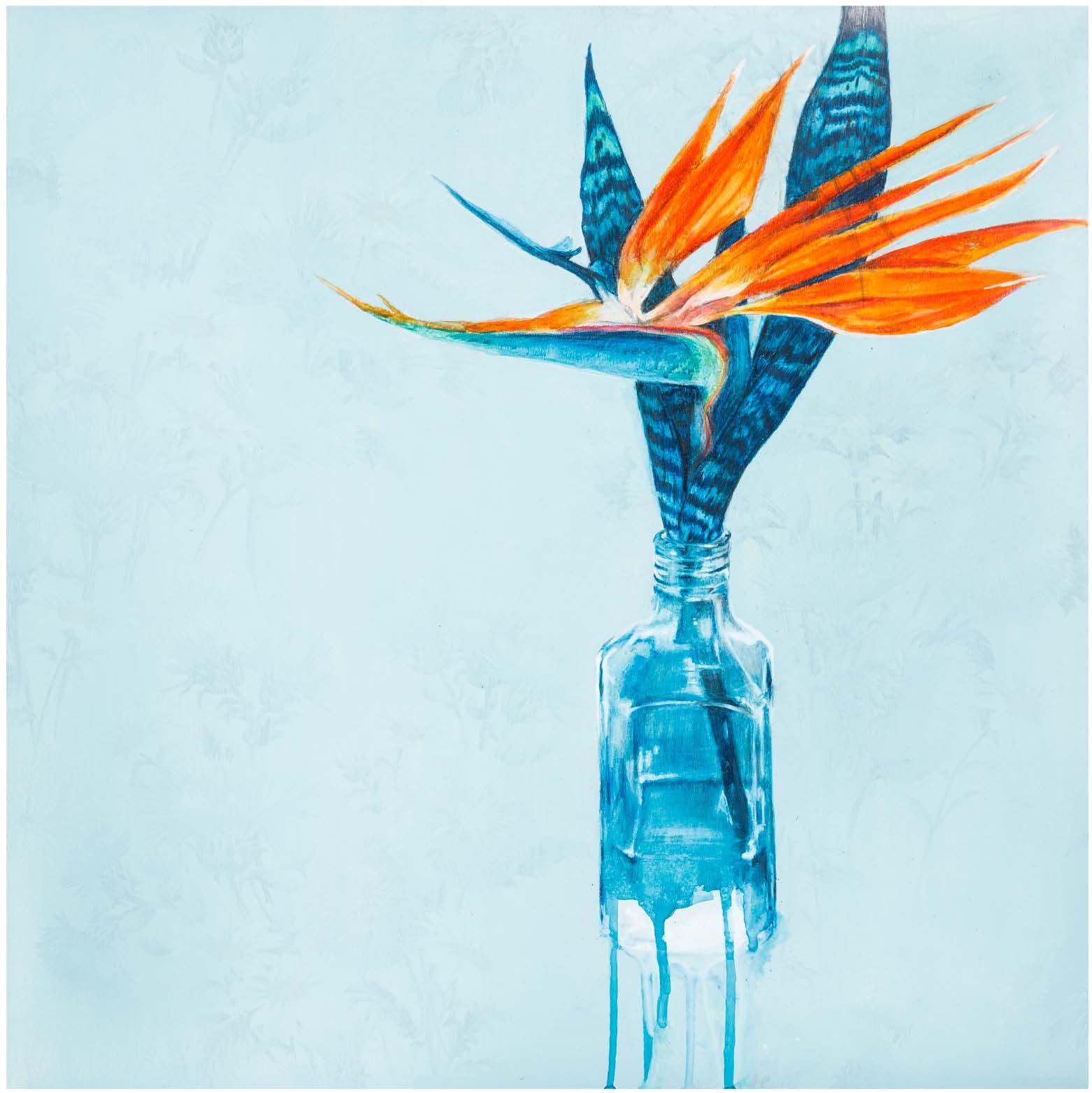
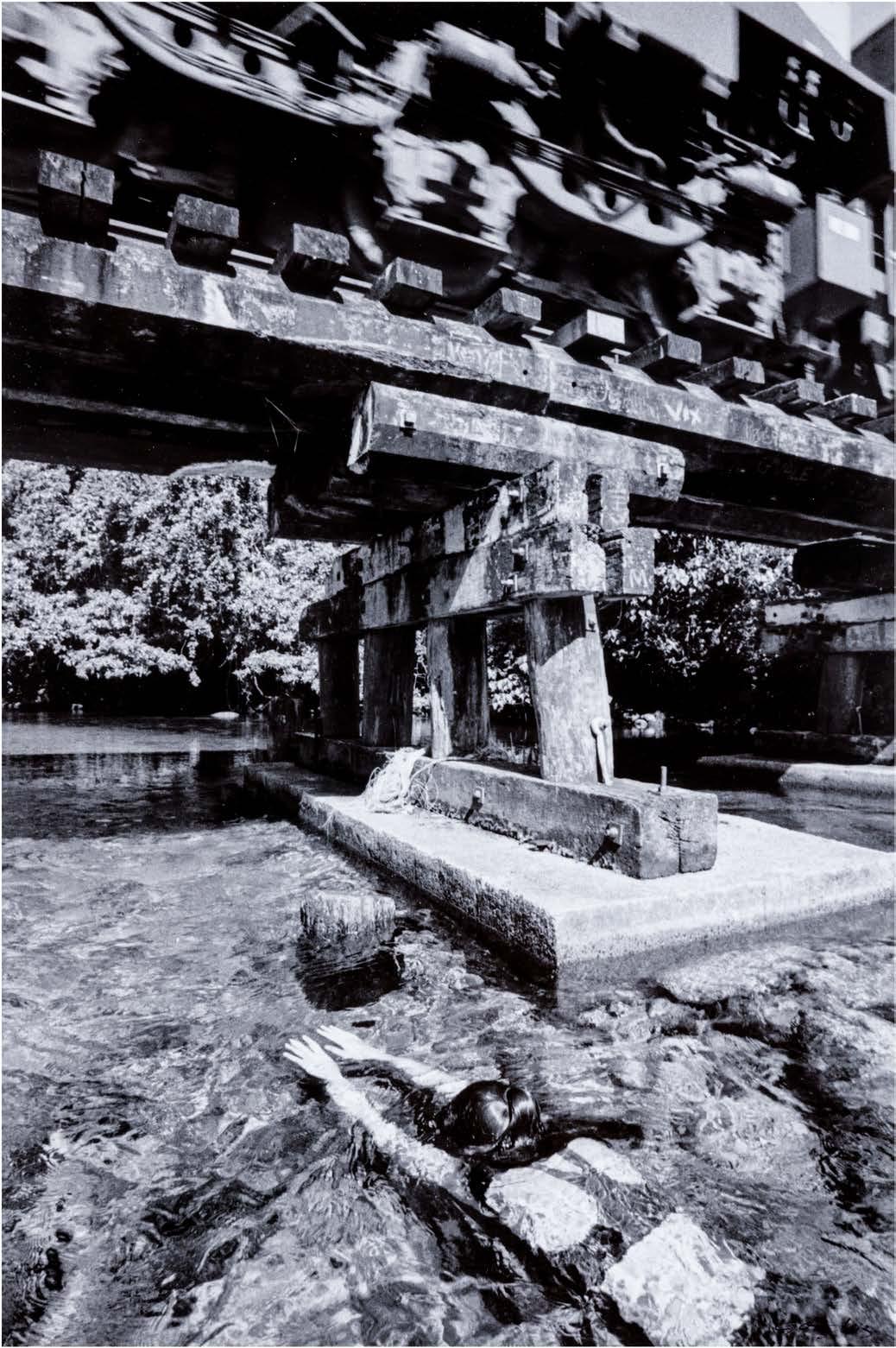
Glen O’Malley
b. 1948, Brisbane, Queensland
Long-ensconced with his Woopen Creek home, Glen O’Malley remains a truly singular voice among Queensland photographers. With an attraction to unexpected compositional, surreal imbrications of imagery, and allusions to eroticism, O’Malley’s works are simultaneously humorous, familiar and woozy. With a wandering (camera) eye that vacillates between off-the-cuff punctum and carefully set up situations, O’Malley’s work continues to grow, and challenge, decades into his career. O’Malley will also be subject to a well-deserved retrospective at Perc Tucker Regional Gallery in 2019.
Digital photography
40.5 x 61.5 cm
Courtesy of the Artist
Robert Preston
b. 1942, United Kingdom
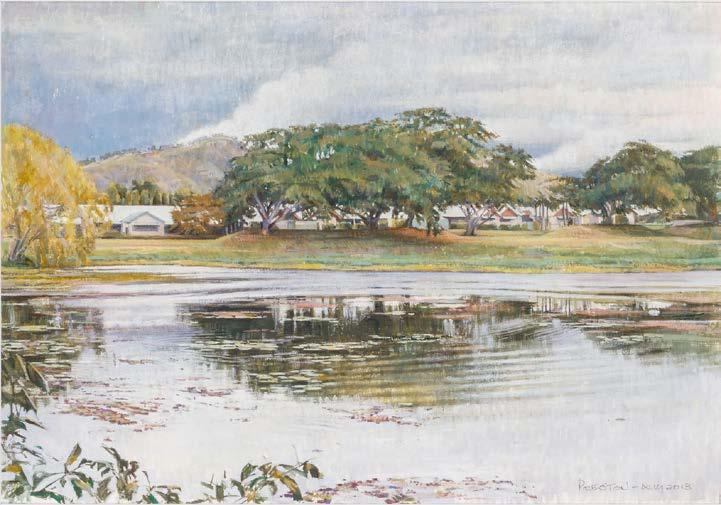
Robert Preston relocated to Australia in 1973 from the UK and settled in North Queensland, first to Innisfail and then in Townsville where he has remained since. Preston’s practice is influenced by the English movement of artists who reassessed traditions of European painting emphasising objective realism. His body of work includes a wide range of media and expresses his interest in surrealism and mysticism. The works included in Utopia Tropicae reflect the artist’s love of the local landscape, all executed on-site over several visits. These works display Preston’s formidable observational work and graphic proficiency, and offer the Ross River as a tropical variation to the bucolic English landscape.
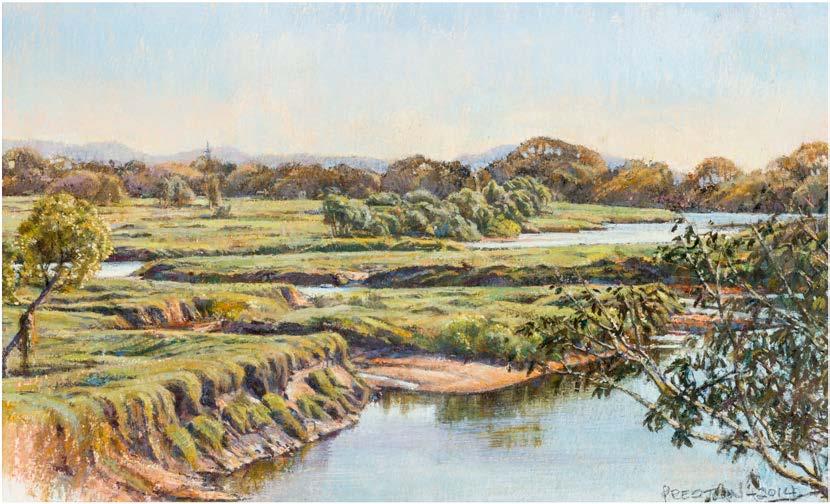
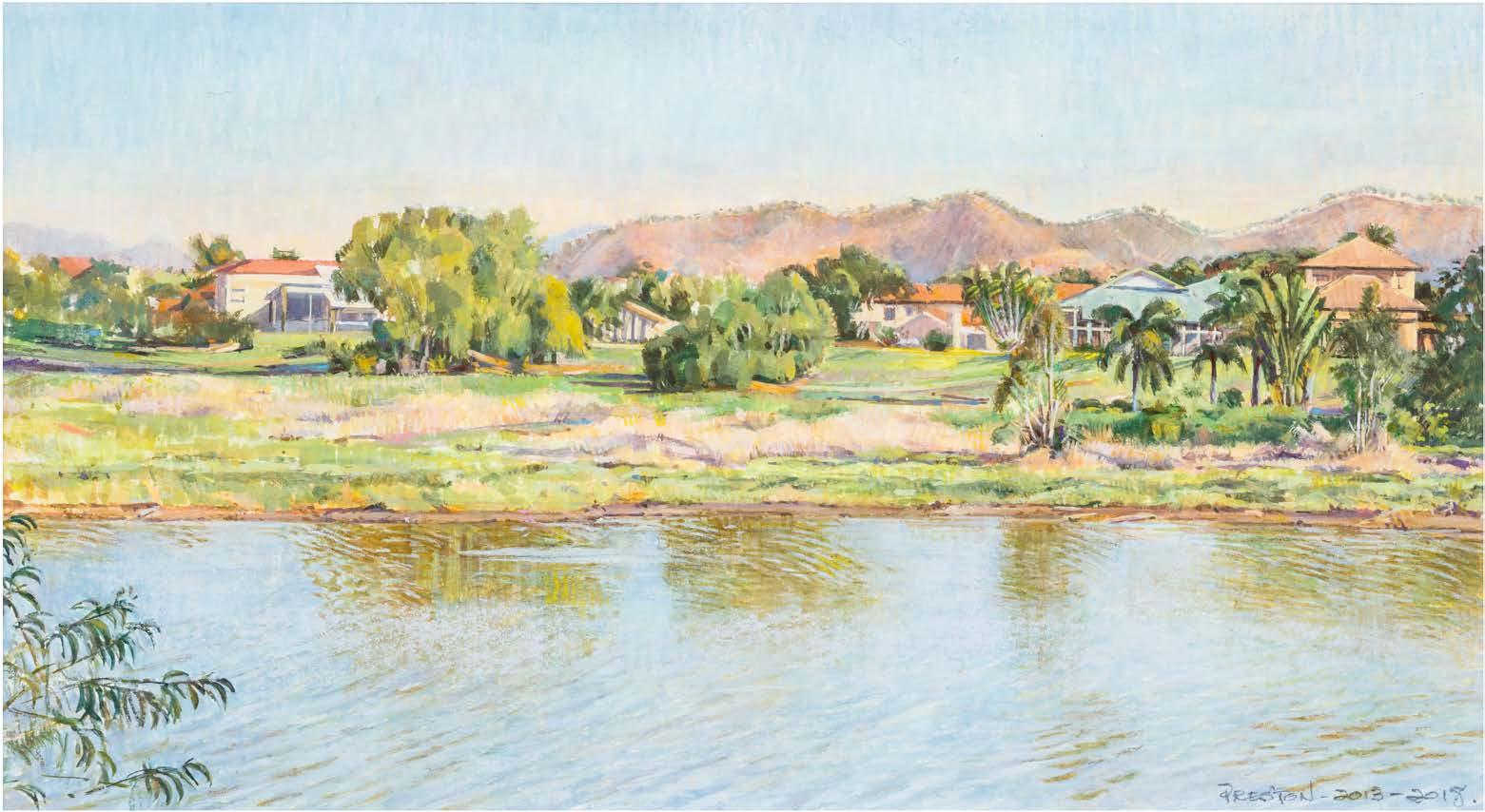
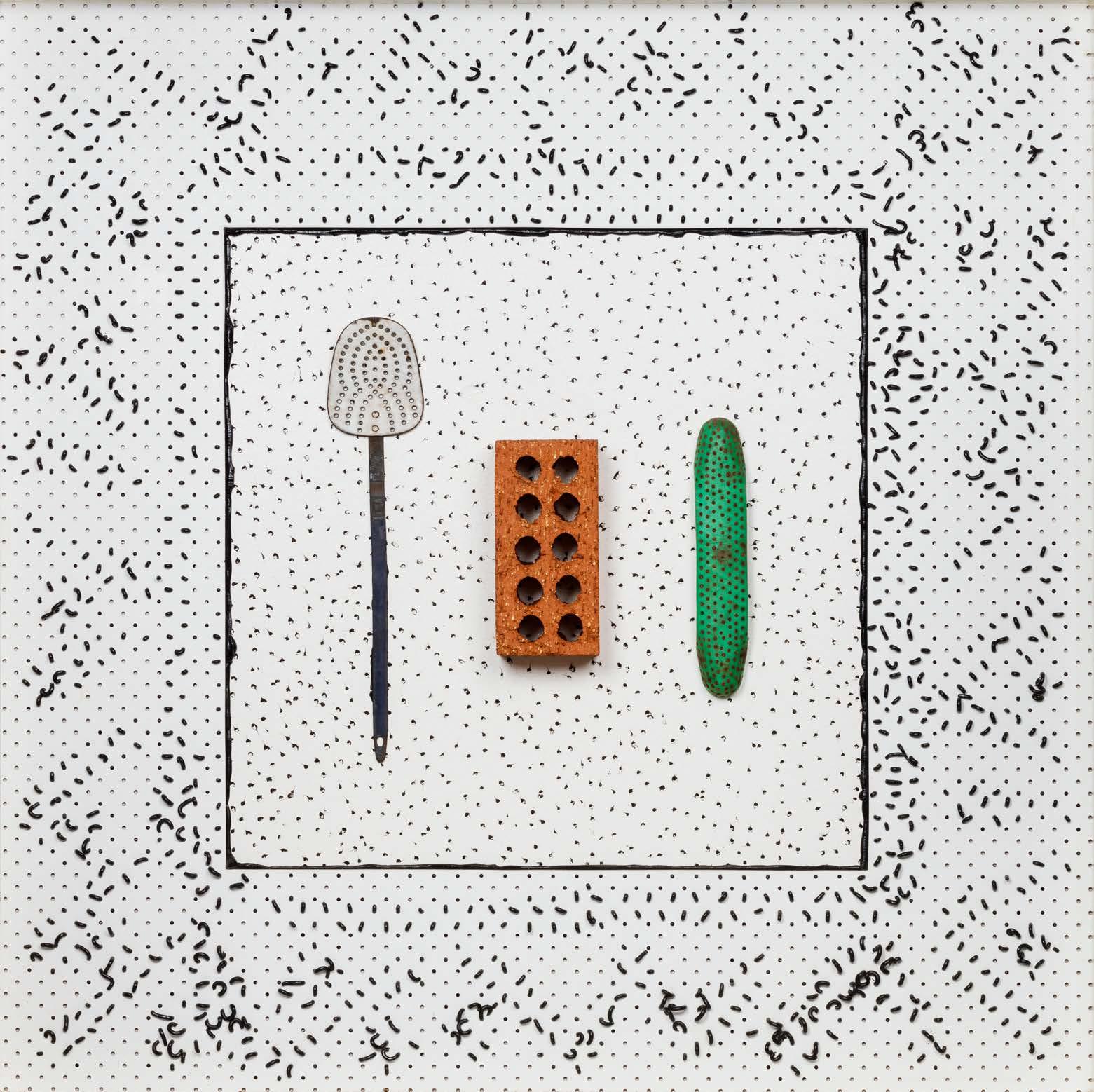
Tom Risely
b. 1947, Rockhampton, Queensland d. 2010, Herberton, Queensland
Tom Risley lived and worked in the small mining town of Herberton, on the Atherton Tableland in North Queensland, but his reach has been international. Risley had the capacity to pursue new ideas, frequently surprising his audiences, with his work ranging from the raw and gestural, gradually evolving into a more sophisticated, contemplative style. Risely’s work is influenced by his environment and surroundings, including the landscape of his home in Herberton, as well as his journeys across Western Queensland. As a self-confessed scavenger and compulsive beachcomber, Risely’s eclectic assembled pieces utilise found materials and objects sourced from his travels to the isolated east coast, from Cooktown to Cape York. This time in solitude allowed him to not only collect materials to be used in future work, but offered a source of inspiration. Using his uncanny compositional sensibility, the artist possessed the ability to take the ugly and turn it beautiful, offering discarded pieces of trash the ability to transcend their material into a piece of art.
White Picture 1987
Caulking compound and found objects on pegboard 123.5 x 123.6 x 9 cm
Purchased with the assistance of the Visual Arts/Craft Board, Contemporary Art Acquisition Grant 1989 City of Townsville Art Collection
Francesca Rosa
b.1971, Innisfail, Queensland
As part of Francesca Rosa’s Memoria series, which investigates the regional history of post-war Italian migration, her work Cane Knife (2017) is the documentation of a broken and rusted cane knife belonging to her father, Mario Rosa (1931-2000). Migrating to North Queensland in 1956, he was required to work as a cane cutter for two years as a condition of his financially assisted passage to Australia. As a characteristic artefact of the sugar industry’s era of manual cutting, the knife has been photographed using an obsolete camera and film, and printed on sugar cane bagasse paper. In a state of literal and symbolic decomposition, the image highlights the aesthetics of decay and acts as last testament to a culturalhistorical way of life. Functioning as a mnemonic device and physical trace for his identity, Cane Knife conceptualises the existence of a loved one and acknowledges the work of Rosa’s father, enabling her to reconnect to him through an object that represents the beginning of his life in Australia.
